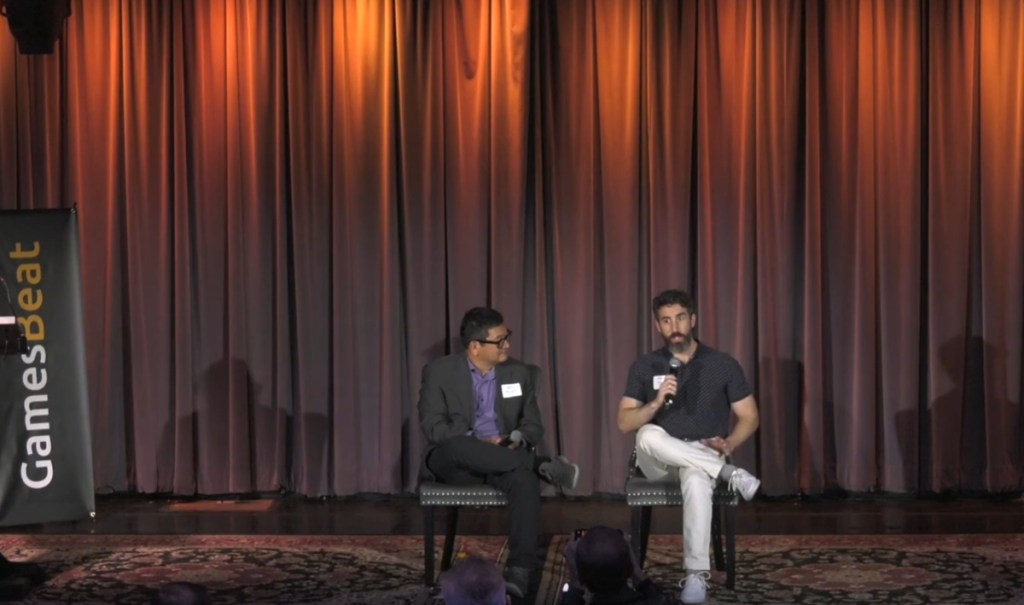Matthew Ball, CEO of Epyllion and author of The Metaverse book, dropped 220 slides in an early access deck this week that explained what happened with the rise and fall of the modern game industry.
The slides are quite readable and I encourage everyone to view them, as it takes a lot less time to go through them and grasp them than if he had dropped a gigantic essay on the topic. Ball did a preview of his views at our GamesBeat Insider Series: Hollywood and Games event on December 12 in Los Angeles. I’m already excited to discuss this new slide deck and the issues it raises at our upcoming event GamesBeat Summit 2025 on May 19-20 in Los Angeles.
Just a few years ago, gaming hit its peak in 2021 as the pandemic forced everyone inside and gamers found solace in online play. The drivers included mobile’s growth, live services, free-to-play, cross-platform, battle royales and battle passes, user-generated content, social play and social game services and the COVID boost itself.
Matthew Ball captured this confluence of events that enabled gaming to grow faster than other markets. But it stalled in the past 2.5 years, resulting in an unprecedented 34,000 layoffs and a shortage of investment capital to fuel the previously started wave of game studios.
In a sentence, Ball summarized what is going on. He wrote, “The exhaustion of decade-plus growth drivers that grew players, playtime, and spend … coincided with evolving user, behaviors, changing monetization models, and growing “lock-in” effects … that exacerbated long-running competitive and budgetary escalations … while growth concentrated in foreign markets that shifted to local productions (and then took share abroad) … and occurred alongside acute macroeconomic financial events and epidemics … were worsened by microeconomic platform policy shifts … as well as the emergence of new and hyper-viral substitutes … and foreign-based competition … alongside too many would-be new growth drivers that have yet to deliver growth.”

The promised drivers of cloud gaming, betting, subscriptions, esports,XR, Web3, metaverse and app store regulation all failed to deliver the much-needed growth, resulting in a winter instead. Players have focused on older existing live service games, stagnating growth in new titles.
Apple’s shift to focus on user privacy over targeted ads crippled mobile gaming growth, which had fueled the decade-long boom in gaming.

The console installed base didn’t grow. Foreign development picked up. Social video like TikTok became more prominent and interesting to youth. Players disappeared into black hole games. Game sampling became a habit of the past. Production timelines grew as did development costs. App Stores had restrictive, closed policies. Price increases were rejected by players. Fear of failure led to more conservative bets. User acquisition cost rose. Game discovery got worse.
Without new growth engines, games got stuck in a vicious cycle. Revenues stagnated. Profits fell, with more large failures like Concord and Suicide Squad: Kill the Justice League. Big companies took fewer risks and curtailed investment. That’s leading to fewer big games and big studios, fewer new hits and innovations, and no player growth or playtime growth. That wheel keeps spinning.

But we’re not without hope, Ball said. The Switch 2 offers some opportunity for renewal. It will have competition from other new handhelds and devices from the likes of Valve, Sony and Microsoft. Double-A and triple-A gaming is having success on mobile in the form of Genshin Impact. Non-core markets are growing like the Middle East. User-generated content platforms and tools are emerging on Roblox, Minecraft, Fortnite and Overwolf. Social game services are rising. App store regulation is starting to happen to possibly get rid of 30% fees. New game genres are emerging, with titles like Helldivers 2 and Palworld rising. AI has the potential to improve game development, cut costs and find new kinds of gameplay. Advertising is growing, and Grand Theft Auto VI is coming this year, possibly with higher pricing.
The result, like always, will be winners and losers.

Meanwhile, I would like to express my shock and horror at seeing the toll of the Los Angeles fires. Please consider these resources here and donations to some of these organizations: 211 LA, California Community Foundation Fund, Direct Relief, Greater Los Angeles Education Foundation, Habitat For Humanity of Greater Los Angeles, Los Angeles Fire Department Foundation, Los Angeles Regional Food Bank, Los Angeles Unified School District Education Foundation Emergency Relief Fund, MusiCares and Pasadena Educational Foundation Eaton Fire Response Fund.
As an aside, It’s interesting to hear the optimism from the crypto folks as a new Trump administration will take power on Monday, evidently with high-level crypto advisers. I fear such a gain for Web3 will come at many other greater costs, like tariffs on game machines.
I wish us all well, and can only think of William Butler Yeats.
“And what rough beast, its hour come round at last,
Slouches towards Bethlehem to be born?”
Source link


